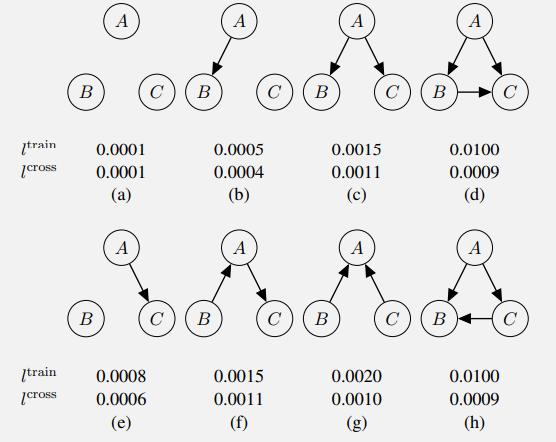You want to learn a Bayes net over the random variables A, B, C. You decide you
Question:
You want to learn a Bayes’ net over the random variables A, B, C. You decide you want to learn not only the Bayes’ net parameters, but also the structure from the data. You are willing to consider the 8 structures shown below. First you use your training data to perform maximum likelihood estimation of the parameters of each of the Bayes’ nets. Then for each of the learned Bayes’ nets, you evaluate the likelihood of the training data (ltrain), and the likelihood of your cross-validation data (lcross). Both likelihoods are shown below each structure.

a. Which Bayes’ net structure will (on expectation) perform best on test-data? (If there is a tie, list all Bayes’ nets that are tied for the top spot.) Justify your answer.
b. Two pairs of the learned Bayes’ nets have identical likelihoods. Explain why this is the case.
c. For every two structures S1 and S2, where S2 can be obtained from S1 by adding one or more edges, ltrain is higher for S2 than for S1. Explain why this is the case.
Step by Step Answer:

Artificial Intelligence A Modern Approach
ISBN: 9780134610993
4th Edition
Authors: Stuart Russell, Peter Norvig





